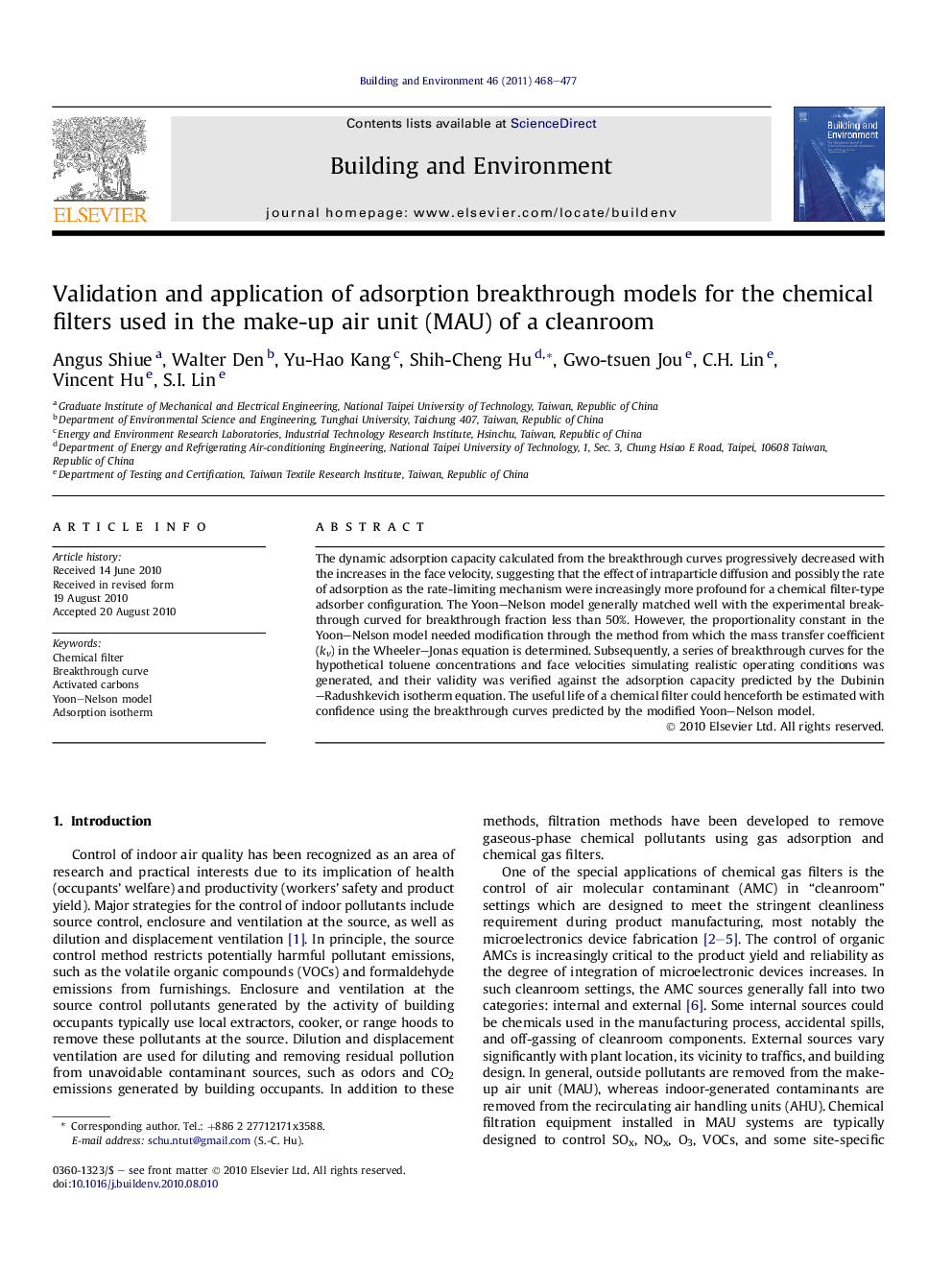| کد مقاله | کد نشریه | سال انتشار | مقاله انگلیسی | نسخه تمام متن |
|---|---|---|---|---|
| 248777 | 502583 | 2011 | 10 صفحه PDF | دانلود رایگان |

The dynamic adsorption capacity calculated from the breakthrough curves progressively decreased with the increases in the face velocity, suggesting that the effect of intraparticle diffusion and possibly the rate of adsorption as the rate-limiting mechanism were increasingly more profound for a chemical filter-type adsorber configuration. The Yoon–Nelson model generally matched well with the experimental breakthrough curved for breakthrough fraction less than 50%. However, the proportionality constant in the Yoon–Nelson model needed modification through the method from which the mass transfer coefficient (kv) in the Wheeler–Jonas equation is determined. Subsequently, a series of breakthrough curves for the hypothetical toluene concentrations and face velocities simulating realistic operating conditions was generated, and their validity was verified against the adsorption capacity predicted by the Dubinin–Radushkevich isotherm equation. The useful life of a chemical filter could henceforth be estimated with confidence using the breakthrough curves predicted by the modified Yoon–Nelson model.
Journal: Building and Environment - Volume 46, Issue 2, February 2011, Pages 468–477